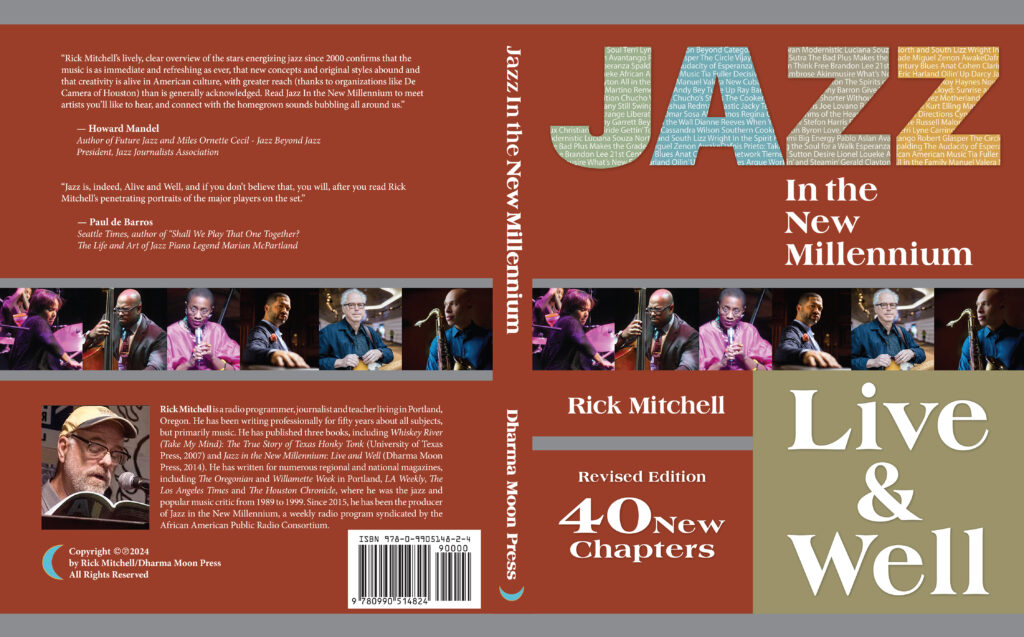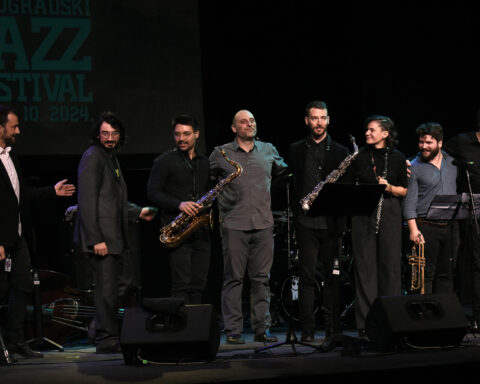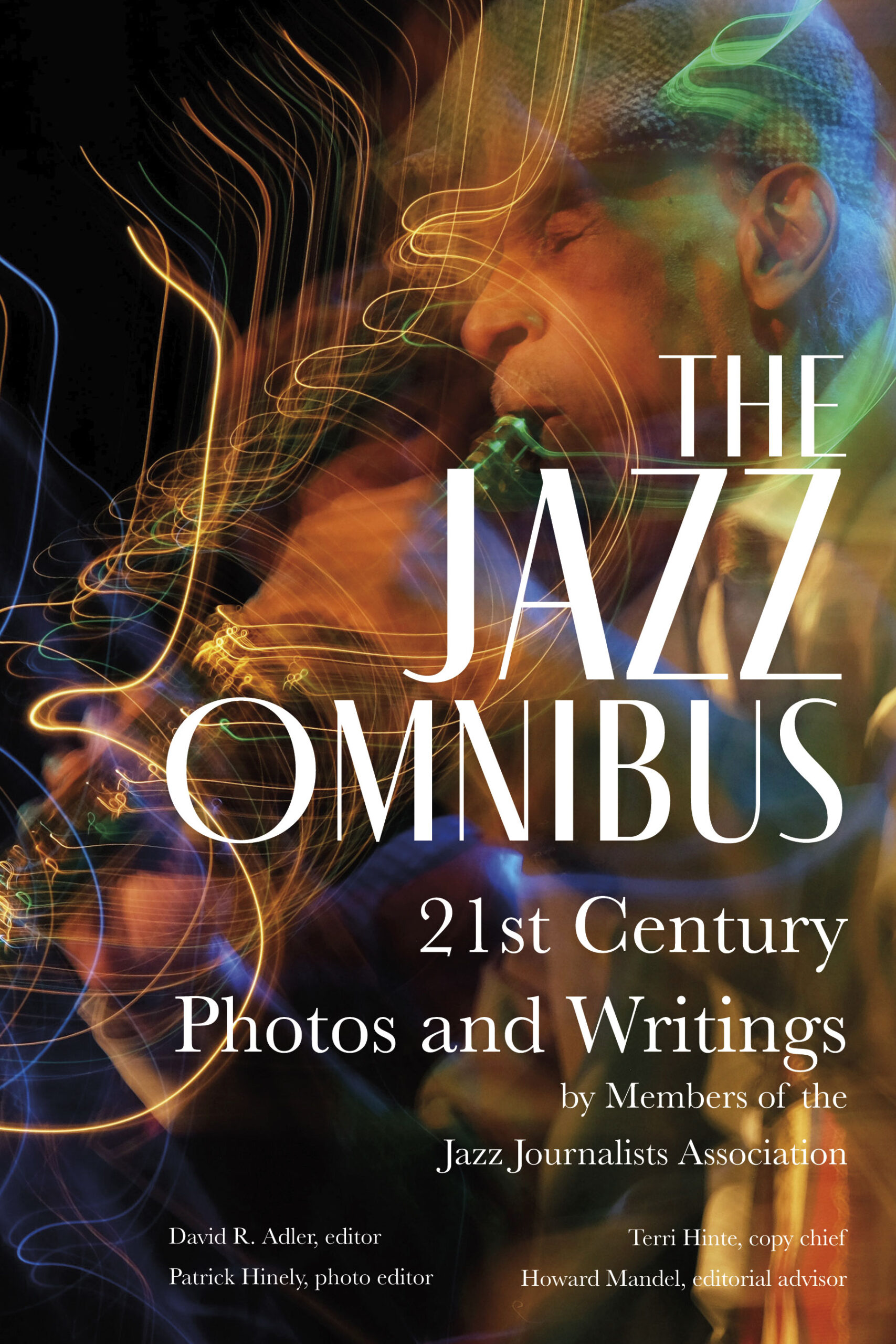I am one of the writers represented in The Jazz Omnibus, a newly released compendium of articles and photographs by members of the Jazz Journalists Association. The piece I submitted, on
Houston drummer Kendrick Scott, was originally published in 2023 in the program notes for the DACAMERA of Houston jazz series. The piece also appears my new self-published book Jazz In the New Millennium: Live and Well, Revised Edition, an expanded edition of a book I published in 2014 collecting interviews I have done with prominent jazz artists active in the 21st Century. Here’s how and why I am doing it on my own.
From 1989 to 1999, I was the popular music critic at the Houston Chronicle, which at the time was among the largest-circulation newspapers in the country. The paper’s previous pop music critics had pretty much ignored jazz, but when Da Camera of Houston, the city’s chamber music society, launched a jazz series in the early ‘90s, I took a serious interest.
The series, which presents an average of six concerts a year, provided a lifeline for serious jazz listeners in a city that lacked (and still does) a venue booking touring jazz artists on a regular basis. Working as a labor of love in addition to my duties covering all forms of popular music, I wrote pre-show interviews, concert reviews and occasional longer features on the young generation of Houston artists that would soon take the national jazz scene by storm.
So when I left the newspaper to become a high school teacher (a subject for a different story on a different website) and no longer had a conflict of interest, Da Camera asked me to take over as the program notes annotator for the jazz series. The first artist I interviewed in the 2000-2001 season was pianist Randy Weston, who was touring with the Splendid Master Gnawa Musicians of Morocco and a band that included the great Houston-bred saxophonist Billy Harper. That was 25 years ago, more than one-third of my life, one-quarter of the way into the current century, and approaching one-quarter of the recorded history of jazz.
I left my teaching job in 2007 to become the artistic director of the Houston International Festival, then went back to teaching in 2014, and in 2017 my wife and I moved to Portland, Oregon, where we had met and married shortly before I took the job in Houston. DACAMERA, as they now prefer to be known, is still doing the jazz series, and I am still doing the program notes.
In 2014 I took a long look at the 60 or so profiles I had done with artists booked by DACAMERA, including many if not most of the leading figures in post-2000 jazz, and decided I had enough material for a book. My initial inspiration was a book of profiles written by Nat Hentoff called Jazz Is, published in 1976. I had written two previous books on country music, both with legitimate publishers (Simon and Schuster, for which I received a nice advance but never got any royalties, and University of Texas Press, for which I received a very small advance but still get royalties). But for this one – given the shifting economics of self-publishing– it made sense to do it myself, in partnership with DACAMERA.
I contracted with a layout and design editor, got the photos from DACAMERA, and paid IngramSpark to print 500 copies. We called it Jazz In the New Millennium: Live and Well, with apologies to B.B. King, a title no one had used and a contemporary overview few if any had attempted. DACAMERA bought 200 books to use as premiums for the subscription series, and I sold about 200 more using the PayPal link on my website, at book-signing events, and in a handful of book and record stores. I gave about 50 away as promotional copies or gifts, and I now have about 50 left that I don’t know what to do with. I am happy to say I broke even.
In 2015, as a spin-off from the book, I launched a weekly one-hour radio show, also called Jazz in the New Millennium, each episode focusing on an individual living jazz artist. The first stations to air the show were KTSU-FM in Houston and WCLK-FM in Atlanta, both affiliated with historically black colleges, and within six months, the show was in syndication through the African-American Public Radio Consortium. It now airs on about 20 stations nationwide, many but not all affiliated with HBCUs, and I have episodes on more than 250 different artists in the can. It is an impressive archive if I do say so. Each program ends with a mention of my book and the address of my website.

Meanwhile, DACAMERA has continued to present artists working at the highest level of the music, and this year we agreed to do another book with the same deal. Jazz In the New Millennium: Live and Well, Revised Edition has 40 new chapters, including both new artists and new interviews with artists from the first book, and it has almost twice as many pages as the first book, with far more photos. The interview/profiles are 1500-3000 words-long, and are conducted in a way similar to what I would do for a newspaper or magazine article. The faces on the cover include Terri Lyne Carrington, Christian McBride, Cecile McLorin Salvant, Jason Moran, Bill Frisell and Joshua Redman.
As I wrote in the revised introduction, “I am shaping the narrative with the questions I ask, and my analysis of the music is never too far from the surface. But as an interviewer, my primary objective is to let the musicians speak for themselves.” I am not necessarily aiming for great literature, but I do think these mid-length profiles are good, solid journalism, easy to read and full of useful information for listeners who want to educate themselves about jazz and/or stay current with what is happening now. I’d also like to think I have gotten better at them over the years.
As before, my first business objective is simply to break even. The total cost is about $11K, including printing and shipping, layout and design, and promotion. The hardest part for me involved computer technology; coding, cataloguing the photo credits, locating the seldom-used WordPress password for my website . . . Fortunately, I got some help from younger family members. Again, we printed 500, this time with a company called LULU.com, of which DACAMERA bought 200.
I have updated my website to take mail orders for the new edition, and I have reading and signing events planned in Portland and Houston. In the coming weeks, Jim Eigo’s Jazz Promo Services will launch a three-month publicity campaign. I expect to add more retail sales going forward, and we can print more books as the demand requires.
But this time I have a greater objective than simply breaking even. Jazz In the New Millennium: Live and Well, Revised Edition profiles 84 jazz artists active in the 21st Century, as comprehensive an overview of who is keeping this great music alive and passing it forward as exists in print. I think this book could be very useful in college and high school jazz programs, either as a supplemental text to existing jazz history courses – many of which tend to focus primarily on the music’s first half-century — or as the subject of a new course: Jazz In the New Millennium. I am reaching out to jazz educators I know, and would love to hear from any of you reading this.
The best music of the first quarter of this century holds its own with the best music in any previous era of jazz. History is being made all around us, even if (as Nate Chinen noted in his 2018 book Playing Changes: Jazz for the New Century) we don’t have enough distance to see our moment with total clarity. To quote from my revised introduction, “Will young listeners 50 years from now discover the recordings of Cecile McLorin Salvant and Joshua Redman and approach them with the same reverence we now have for Billie Holiday and Lester Young? I don’t know. But I am here to make the case that they should.”
Jazz In the New Millennium: Live and Well, Revised Edition is available for purchase at www.rickmitchell.us; Rick can be reached at rick@rickmitchell.us.






